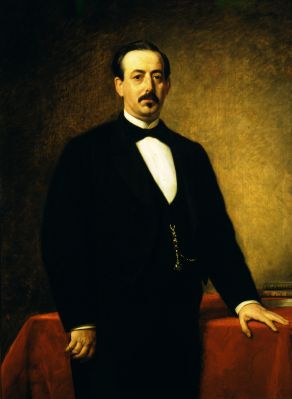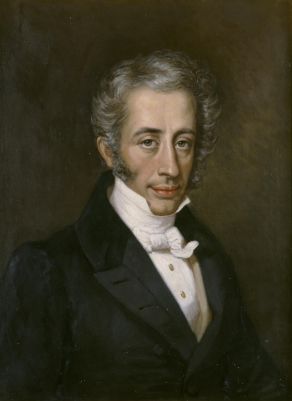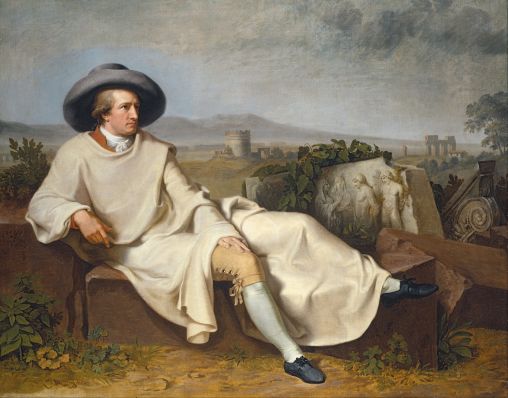Romantic Theater – Sentimentality, Dramatism and More
Contents
Definition of Romantic Theater
This theater developed between the 18th and 19th centuries and the plays represented an attitude based on freedom and individuality. Therefore, the authors claimed all kinds of freedom and opposed the rules. The works of these actors, romantic artists were focused on imagination. Also, in their works they dealt with their own themes (emotions and feelings), since the actors rebelled against the society, which limited their freedom.
As in the rest of the romantic literature, it stands out for its sentimentalism, dramatism, predilection for dark and lurid themes, the exaltation of nature and popular folklore. A new genre emerged from this theater, melodrama, and variety shows (vaudeville) became popular. Greater emphasis was placed on artistic direction and scenography, on the visual character of the theater and not only the literary one.
Progress was made in the interpretative technique, with greater psychological depth (Stanislavski method, Lee Strasberg’s Actors Studio), and vindicating gesture, action and movement. The three classical units were abandoned and experimental theater began, with new ways of doing theater and a greater emphasis on spectacle, returning to ritual and the manifestations of ancient or exotic cultures. The theatrical director, who is often the architect of a particular vision of the staging, becomes more and more important.
How did the Romantic Theater develop?
The main theme of the plays of the romantic theater is love. In the development of the plot a series of disasters are unleashed. It has also from the literary point of view, a combination of prose and verse. He used melodramatic plays to impress the audience, and violent scenes abound in it. Sometimes tragic and comic elements are mixed. Feelings prevail over reason.
The Romantic Theater in Europe
In France, Germany and also in Spain, they developed this theater. In Germany the first romantic plays were performed, however, romanticism had already arrived half a century earlier in France and Spain. The main German romantic authors were Goethe, with his work Faust, and Schiller, with The Bandits. Likewise, in Romantic theater, both ancient and modern, the aim was always to appeal to the emotions rather than the intellect. Special effects therefore focused on the supernatural and mysterious, with a predominance of the visual over the verbal, sensational, rather than the intellectual.
Thus, aristocrats tended to go to the opera and ballet, while the middle class went more to the theater, so the size of the audience increased even more. Therefore, the audience becomes more important than the sound as well as the realistic detailed systems that were also not the norm. Likewise, orchestra seats, which until then had been cheap seats, became more valuable. The upper galleries were the cheapest. Likewise, the stages were public, especially those of the gods, were loud and vocal, the floors with rows of free-cut flat ground and the people stood on the painted and realistically manicured stage floor of natural scenery.
Lighting was by candles or oil lamps, but from 1830, theaters were gas-lit (Chestnut Street Theater in Philadelphia was the first to be gas-lit, in 1816). Since gas lighting provided greater illumination with better control of intensity, but had wavering flames. Also, this theater presented many special effects such as flying, trap doors, water pump, movement, panoramas to give the illusion of traveling, running in the afternoon, allowing horses and chariot races, volcanic eruptions, fires, among other effects.
Each stage sought to present an illusion of reality, with many details and had to be historically and geographically accurate. In terms of meaning, while romanticism was unrealistic in its direction, action and drama, as a whole, the costumes and lighting tried to be as realistic as possible. Thus, Romanticism inadvertently paved the way for the easier acceptance of realism. But at first, it must have gone through a movement that helped make the theater more popular and accepted by the common person.

The Romantics did not follow traditional theatrical rules. On the contrary to rationalism, Romantic theater actors embraced subjectivity and nature. Highlighting the fact that Napoleon led Europe from rationalism to romanticism, based on the ideas of Jean Jacques Rousseau who wanted to reclaim human freedom.
Hence, romantic theater was sometimes seen as a return to the Middle Ages, due to the return of the church over reason, as nationalism as an inspiration led to the French revolution and a unified Germany, driving the reign of terror in the desire for a leader who would rule with cold logic and reasoning.
Likewise, in their characteristics, the Romantic playwrights set the design of the history of Romanticism, taking into consideration that the industrial revolution was producing the growth of an urban middle class leading to the popularization of theater as a whole. The Romantics believed that the Industrial Revolution was an attack on nature.
Thus, the end of romanticism is characterized by the beginning of realism. So in the Romantic performance emphasized the freedom of emotion and very melodramatic passion, consisted of the hero, the heroine, the villain and the accomplice protagonist, played as strong and unique, so, they succeed because they rely on their gut instinct and romantic emotion.
What was the legacy of the Romantic Theater?
The romantic drama writer abandons everything rigid and inflexible of the neoclassical drama, in the structural as well as in the creation of the characters, resulting in rebellious beings, regardless of the social norm. The Romantic authors took up fundamental themes and forms of the theater of the 17th century, not sufficiently developed, and took them to their ultimate consequences.
Binomials as well known as love-hate, life-death, angel-demon, heaven-hell, salvation-condemnation, in most of the comedies of the eighteenth century have no other reference than the close everyday world, which only arises in terms of the achievement of certain material interests and, therefore, are confronted in the most positive way possible.
These binomials, have taken on other more serious dimensions in the romantic theater and the protagonist, in every question, in every action, stakes his life because he wants more, to know himself and change his world. Everything is summed up in the individual-society opposition, already found in Rousseau. To be recognized, and identified, for the author of the XVIIIth century and for his public was an expected coup.
But in comedies such as those of Valladares, Cornelia or Zavala, of the Spanish theater, the recognized man, a stranger until then, who acquires a different dimension by being endowed with a known past, begins to take on a new interest. In the romantic dramas this anagnorisis often takes on a tragic character. For example, Manrique, in The Travador, is the brother of the one who has him murdered; Ruggiero is condemned by his own father in The Conjuring of Venice, and so on.
The confrontation with the social order leads the romantic protagonist to perform marginal actions, outside the law or hidden. For example, he marries in secret, like Laura and Ruggiero. Consequently, the theme of death for love, for pain, the idea of suicide as the only way out of the situation, that “dying together” of the lovers who cry “the misfortune of their fate”, is also found in the theater of the end of the century, in comedies such as El mágico del Mogol, by Valladares; Eduardo y Federica, by Zavala; or Cecilia la cieguecita, by Gil y Zárate, the latter, is considered to be of a later date.
In this sense, the romantic characters arrive at the idea of suicide after a process of observation that includes the application of reason to the environment and the feeling of that environment as something contrary to one’s own desire. For a romantic theater actor, suicide is not only the capital solution, it is the ultimate act of affirmation of his individuality, of his lack of attachment, the way of manifesting that being god of himself. This emergence of subjectivity, of relativism, brings with it an approach to nature, which is understood as something changing and harmonious with one’s own feelings.
This direct and indirect knowledge is filtered, as a way of life, in all social strata. Likewise, the scenography expresses this new attitude very well, since it will change with the mood of the protagonist. Gardens with animated statues, in relation to what was happening in Europe, thunder, lightning, clear dawns, among others, will transform the romantic scene. The scenography will know a function that it did not have before and will contribute to insert the man in the nature that will change with him.

Main representatives of the Romantic Theater
Romantic theater had two notable representatives Johann Christoph Friedrich von Schiller (Don Carlos, 1787; William Tell, 1804) and Johann Wolfgang von Goethe whose plays are characterized by extensive, long and arduous action. Faust Parts I and II, 1801 and 1831, was their most important work, and is now accepted more as a closet drama, a literary work, rather than presented on the stage.
Likewise, Friedrich Schiller (1759-1805)-and William Tell (1804) make a stirring celebration of democracy, individualism, and nationalism. Likewise, in France, Hernani de Victor (1830), who had difficulty being accepted and allowed his romantic ideals throughout the National Theater of France, in which the French academy had determined that all French plays would be neoclassical in form.
Thus the contents of his plays were of lofty language, noble characters and the form of the neoclassical law of five. However, there were also common people as some important characters, struggles with the norm, violence, death and humor, therefore it was not neoclassical. Finally, romanticism gained space, even in France, but not without a previous struggle.
The Sturm und Drang movement in Germany was led by Johann Wolfgang von Goethe and Friedrich Schiller, with a content in the theater of enthusiastic action, high emotionality and rebellion of the protagonist against society.
Other great exponents were: Georg Büchner, Christian Dietrich Grabbe, Juliusz Słowacki, Alfred de Musset, Victor Hugo, Francisco Martínez de la Rosa, the Duke of Rivas, Antonio García Gutiérrez, José Echegaray, José Zorrilla (Don Juan Tenorio, 1844).
Also notable actors include Edmund Kean who played roles in villainous. William Charles Macready’s Essays, of detailed characterizations, with popularized historical accuracy and costume adjustments.

